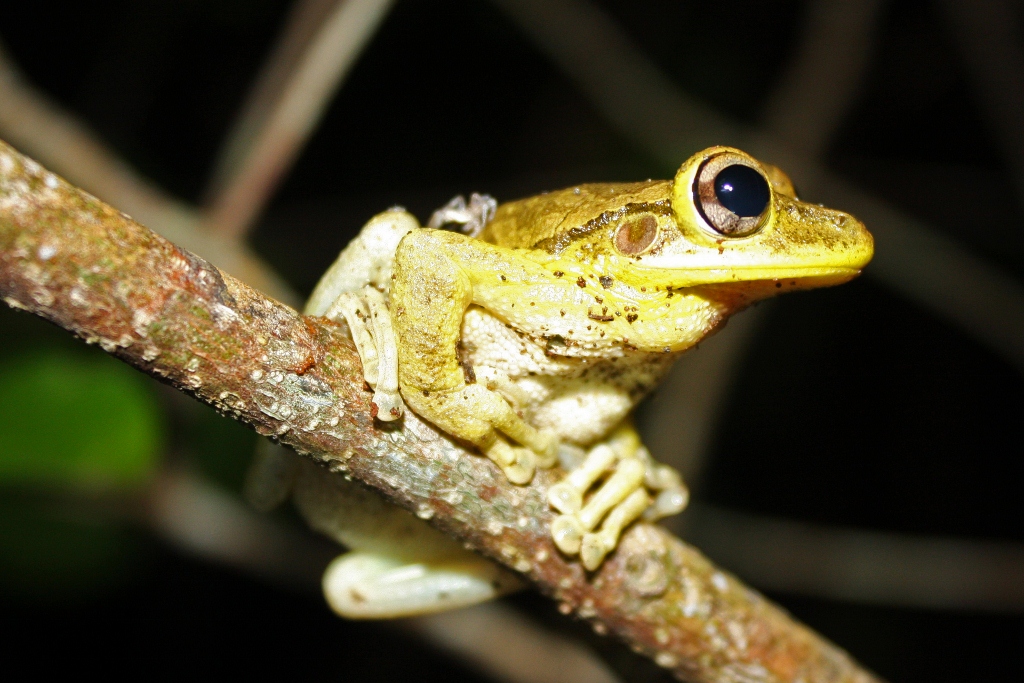We're open daily! View holiday hours
Science News
Fighting Fungus with Fungus
July 11, 2014
by Molly Michelson

As we reported in our video “Stopping Chytrid, Saving Frogs” earlier this year, local scientists and others are racing to find a cure to a deadly disease killing amphibians globally. Batrachochtyrium dendrobatidis, or Bd, is a chytrid fungus that spreads over amphibians’ skin that suppresses the animals’ immune system, spreading fast and often killing entire populations. Frogs are the hardest hit.
Researchers are looking at fungicides and natural occuring microbes found on the skin of frogs to fight and kill the fungus, and this week, researchers from the University of Florida suggest another option—the fungus itself.
Publishing in Nature, Jason Rohr and his team exposed frogs to Bd in the lab to attempt to build up behavioral or immunological resistance to the fungus. The team then killed the fungus on the frogs after exposure by raising the temperature of the lab. One experiment in the study revealed that after just one exposure to the chytrid fungus, frogs learned to avoid the deadly pathogen.
In subsequent experiments in which frogs could not avoid the fungus, frog immune responses improved with each fungal exposure and infection clearance, significantly reducing fungal growth and increasing the likelihood that the frogs survived subsequent chytrid infections.
Academy herpetologist Dave Blackburn, who studies frogs (and Bd, since the two go hand-in-hand) in Africa and elsewhere applauds the study. “This work from Jason Rohr and colleagues is a significant and important advance in our understanding of the interaction between the pathogenic fungus Bd and the amphibians it infects. Not only do they demonstrate that frogs can acquire resistance to Bd through repeated exposures, but they also demonstrate that frogs can acquire resistance even through exposure to dead Bd.
“This study will have important consequences to amphibian conservation, especially for captive breeding programs,” he continues. “As the authors point out, it may help to have controlled and repeated exposures to Bd in captivity before reintroducing populations to the wild so that they'll have acquired immunity before encountering it once released. We often worry about Bd infecting our captive frogs that we have for research and exhibit purposes and then decimating our living collections. Perhaps a strategy to control Bd outbreaks in captive populations would be to purposefully induce acquired immunity. It makes me think that perhaps our frogs we brought back from Cameroon last year are better off because they had been infected by Bd and then cleared of it once they came to the Academy!”
Image: Thomas Brown/Flickr